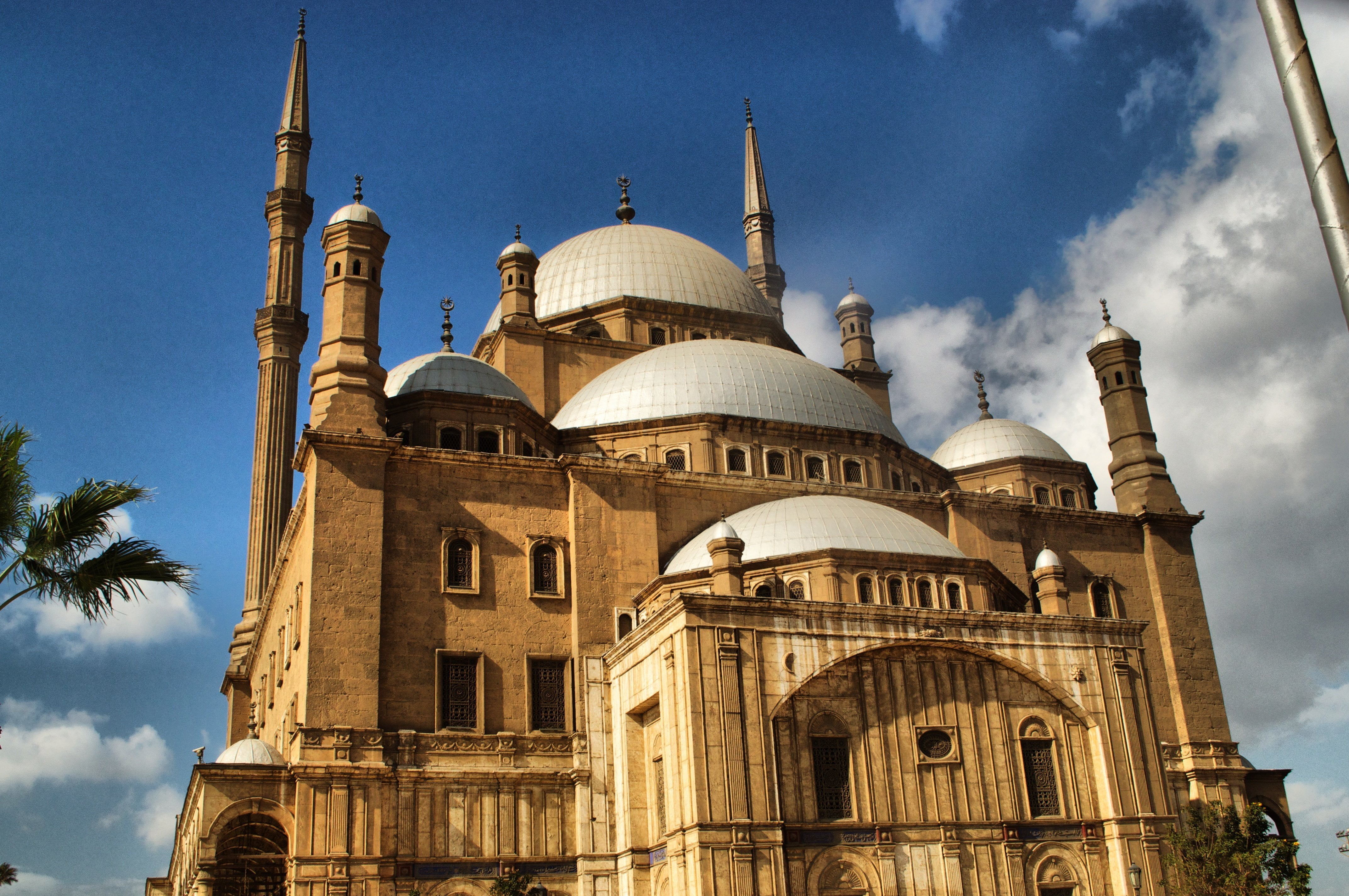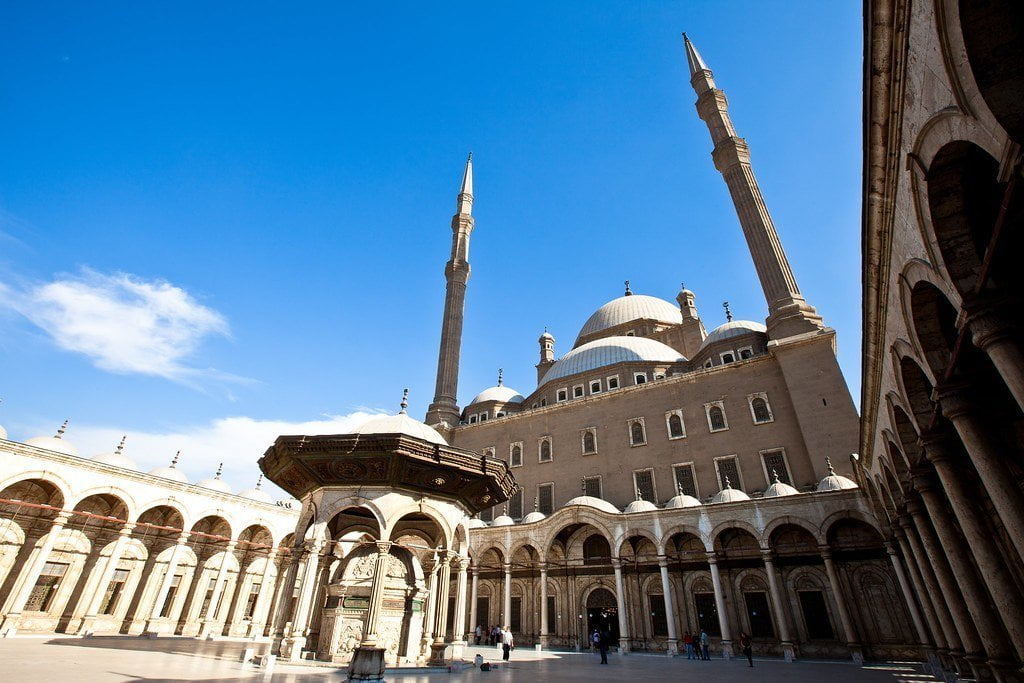Brief history
Mohamed Ali Mosque is amongst the most interesting Mosques in Egypt. It stands proudly on the highest point inside the courtyard of the Citadel of Saladin, and is also called the Alabaster Mosque. The architect was Yousf Boushnaq, a Turkish man who had come over from Istanbul to build this great Mosque for Mohamed Ali, the ruler of Egypt from1805 until 1849.
He based his plans on the Sultan Ahmed Mosque in Istanbul, and the construction began in 1830 A.D. The work continued ceaselessly until the death of Mohamed Ali in 1849, and had to be finished during the reign of his successors. Mohamed Ali was buried in the tomb situated on the south-eastern side of Beit Al Salah, on the right side of the entrance that leads to the main section.
In 1899 the Mosque showed signs of cracking and repairs were undertaken, but some of these repairs were not adequate. Therefore, in 1931, during the reign of King Fuad I, a committee was set up, comprising of several great architects, which eventually presented a report recommending the demolition of the big main dome, the semi domes and the small domes, and then reconstructing them according to the original design. Between 1931 and 1939, the project, including demolition, building and rebuilding, painting and gilding, was undertaken; the total cost being 100,000 LE.

The main material used for the construction was limestone, but the lower parts of the Mosque, and the forecourt, are faced to a height of 11.5m with alabaster.
The Mosque is rectangular in shape and consists of two sections:
The Eastern Section, which is the main section, called “Beit al Salah” or “House of Prayer”.
The Western Section, called the “Sahn” “or “Courtyard”.
The Eastern Section (The “Beit al Salah” or “House of Prayer”)
The eastern section is the part that was dedicated to prayer. It is square in shape, each side measure 41m, and has a roof with a central dome (52m in height) resting on four large arches supported by massive piers. Surrounding the big central dome there are four half domes, while there are four more small domes covering the corners.

The marble mihrab is covered by a half-dome at the lower level. The domes are pointed and covered with medallions and other motifs. The interior dome is impressive because of its size and shape, similar to the Mosques of Istanbul. There are 6 medallions around the dome, which include the names of Allah (God) and Mohamed (the Prophet), as well as the names of the four rightly guided Caliphs, namely Abou Bakr, Omar, Othman, and Ali.
The mosque has 2 Minbars or pulpits; the original one is the larger, it is made of wood decorated with gilded ornaments, while the smaller one is of marble, it was gifted to the mosque by king Farouk in 1939 A.D.
Above the entrance is a grand gallery supported on marble pillars with bronze balustrade. To the right of the entrance is the tomb of Mohamed Ali. It is made white marble covered with floral motifs, and pointed and gilded inscriptions. originally Mohamed Ali was not buried in his mosque but later during the time king Abbas I (1849-1854), His body was transferred from Housh El Basha to the inside of the mosque where it rests inside The bronze grill.

The Western Section (The Courtyard or the Sahn)
It is a large open courtyard of about 54 m in length and 53 m in width. It is surrounded by a single arched riwaqs or naves raised on pillars and roofed with small domes.
In the middle of the courtyard there is the ablution fountain, it is octagonal in shape and covered by a large leaded domed canopy resting on 8 pillars with natural ornaments. Inside the dome is another marble small dome and it is octagonal in shape, decorated with floral motifs. In the walls of the riwaqs of the courtyard there are 46 widows. While the Eastern wall which overlooks the Eastern Section, it has 8 windows above which there is a frieze of inscription of the Koran (Surat Al Fath),
Above the entrance to the Easter section there is frieze that bears the name of the Turkish sultan Abd Al Maguid.
Opposite to the doorway of the prayer House, at the far end of the centre of the NW Riwaq is a pavilion, above which is an elaborate French Clock, presented to Mohamed Ali in 1845 by the King Luis Philip in exchange of the obelisk which is now standing in the Concorde square in Paris. This clock has never been working properly!
At the west and the North Corners are 2 slender octagonal minarets that rise to 82 M in height. And has with 2 balconies.







